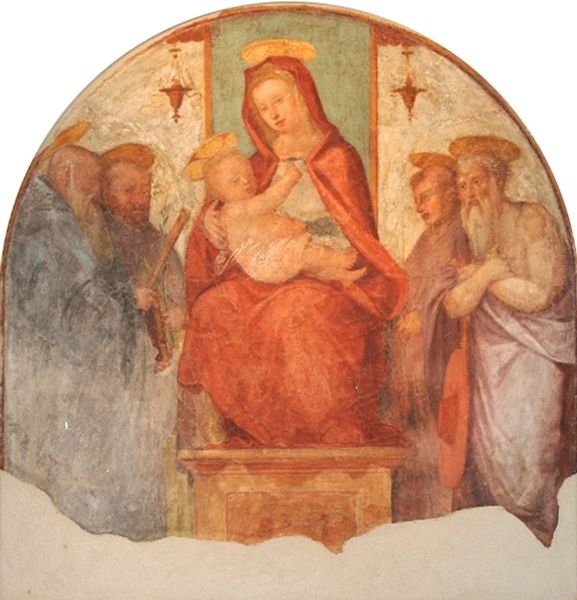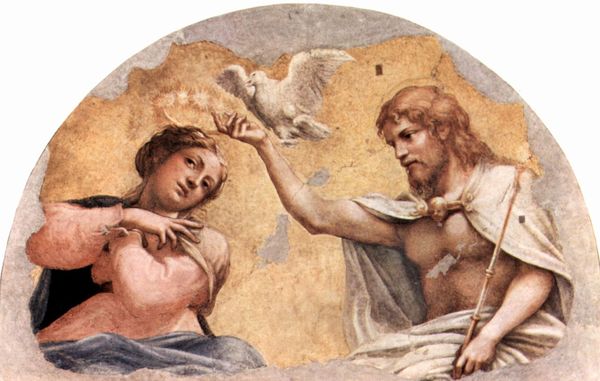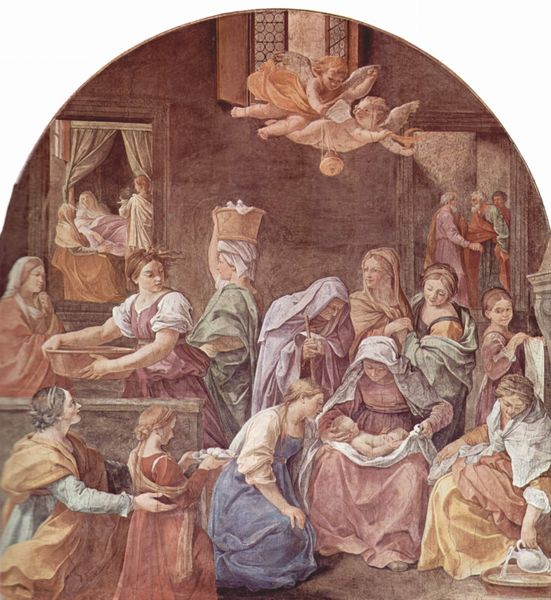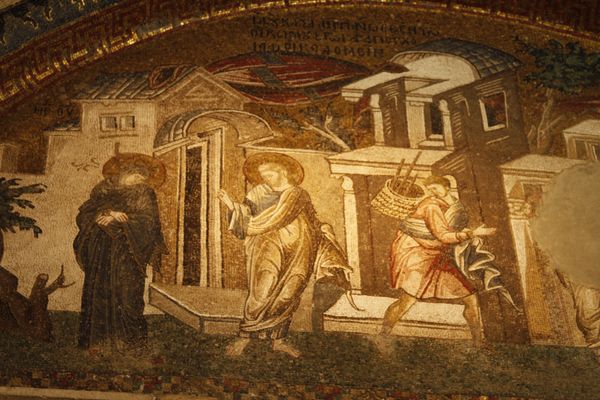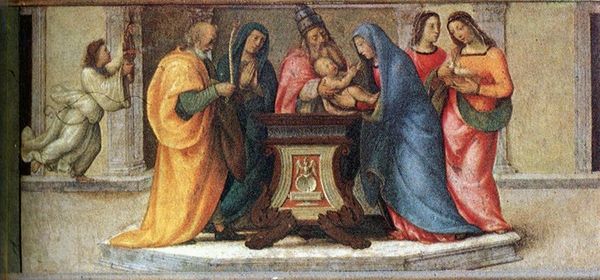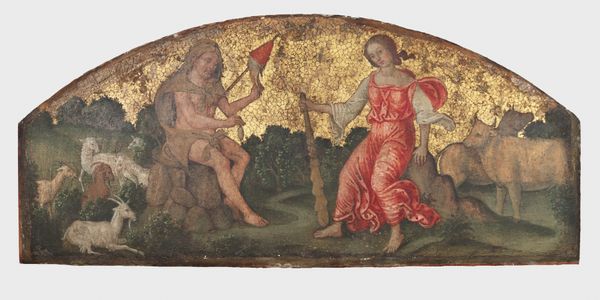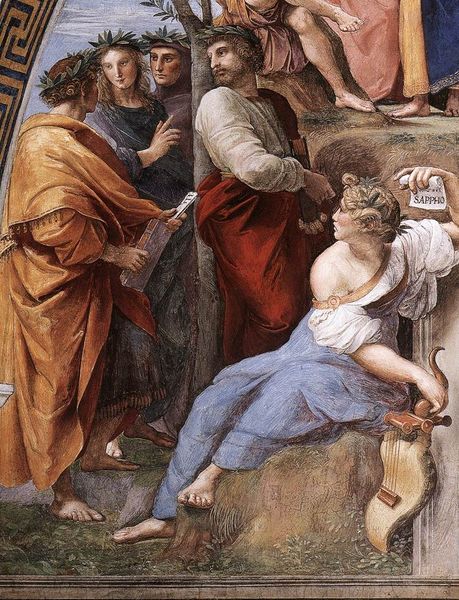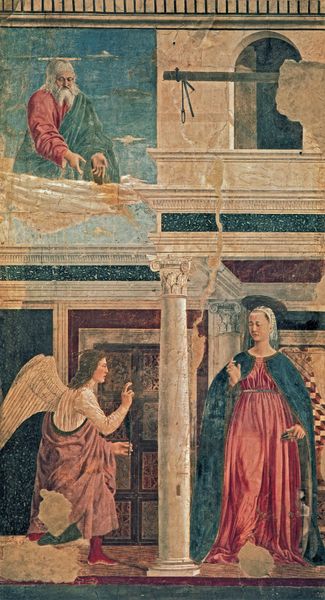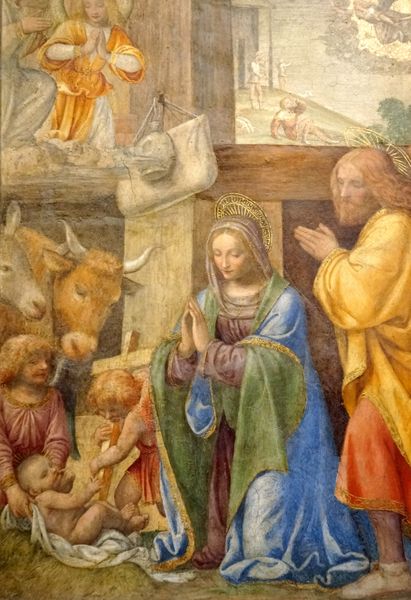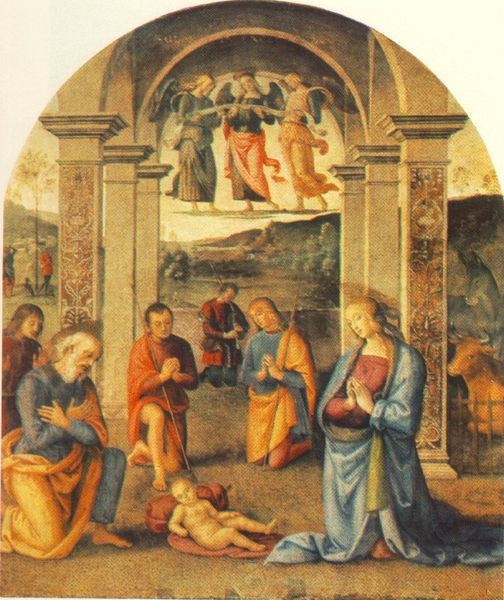
painting, fresco
#
portrait
#
high-renaissance
#
painting
#
figuration
#
fresco
#
oil painting
#
child
#
christianity
#
italian-renaissance
#
christ
Copyright: Public domain
Curator: Standing before us is Pontormo's 1514 fresco, "Mary with Christ Child and Saints". It’s just such a faded beauty! My first thought goes straight to…disquiet. Is it just me, or does this High Renaissance piece radiate an underlying sense of unease, the delicate forms almost…spectral? Editor: It's a beautiful and loaded scene. If we consider the standard iconographic reading, you know, Mary at the center representing the Church, Christ the hope of salvation— the saints alongside represent figures within this framework who exemplify virtue. And yet the faces. You’re onto something. Curator: Right? They are so very beautiful and stylized. Almost masks that hint to some unrevealed spiritual experience that seems separate, yet co-occurrent to them all, and us, as witnesses to their beauty, if that makes any sense? Their placement too – such closeness. It's oddly airless in its rendering, right? The colors feel almost… muted by intent and then again, just in a natural fashion as a result of it having aged. Editor: Frescos often fade and change! It speaks to history’s effect. Yet, color here is absolutely intentional. Consider blue in Christian art; blue is often used to symbolize both Mary's purity but also the heavens. Pontormo drapes Mary in light blue, emphasizing her divinity but tempering it by juxtaposing it with warm orange-red fabrics that soften any dogmatic coldness that blue can often impose by representing both heart, courage, as well as a general openness. But you were spot-on earlier regarding its arrangement. Curator: Exactly. It seems like something beyond a physical proximity and that there is another space these individuals can tap into while we get to observe their outer visages while being here ourselves! Do you think then this contrast—or co-occurance rather—between this world and what they each access, represents his personal journey, then? This painting representing a personal moment where he reconciled the space of both worlds? Editor: Fascinating question. If we remember that the Renaissance rediscovered classic humanist values and individualism alongside biblical tales, perhaps it's about aligning one’s personal search for understanding within faith's boundaries, as you seem to say here! That inner quest that still positions Mary and Jesus at the center – but with individuals now in empowered orbit. Food for thought indeed! I must say that despite the visible degradation of the fresco, I also notice it, this sort of odd, soft tenderness that is rather sweet, if anything. Curator: Maybe that sweetness represents hope, don't you think? Something that both he, the people in the fresco, you and I all may aspire towards. The disquiet comes from an active contemplation on how to pursue it! What an image, though. Thank you, Pontormo, thank you!
Comments
No comments
Be the first to comment and join the conversation on the ultimate creative platform.
